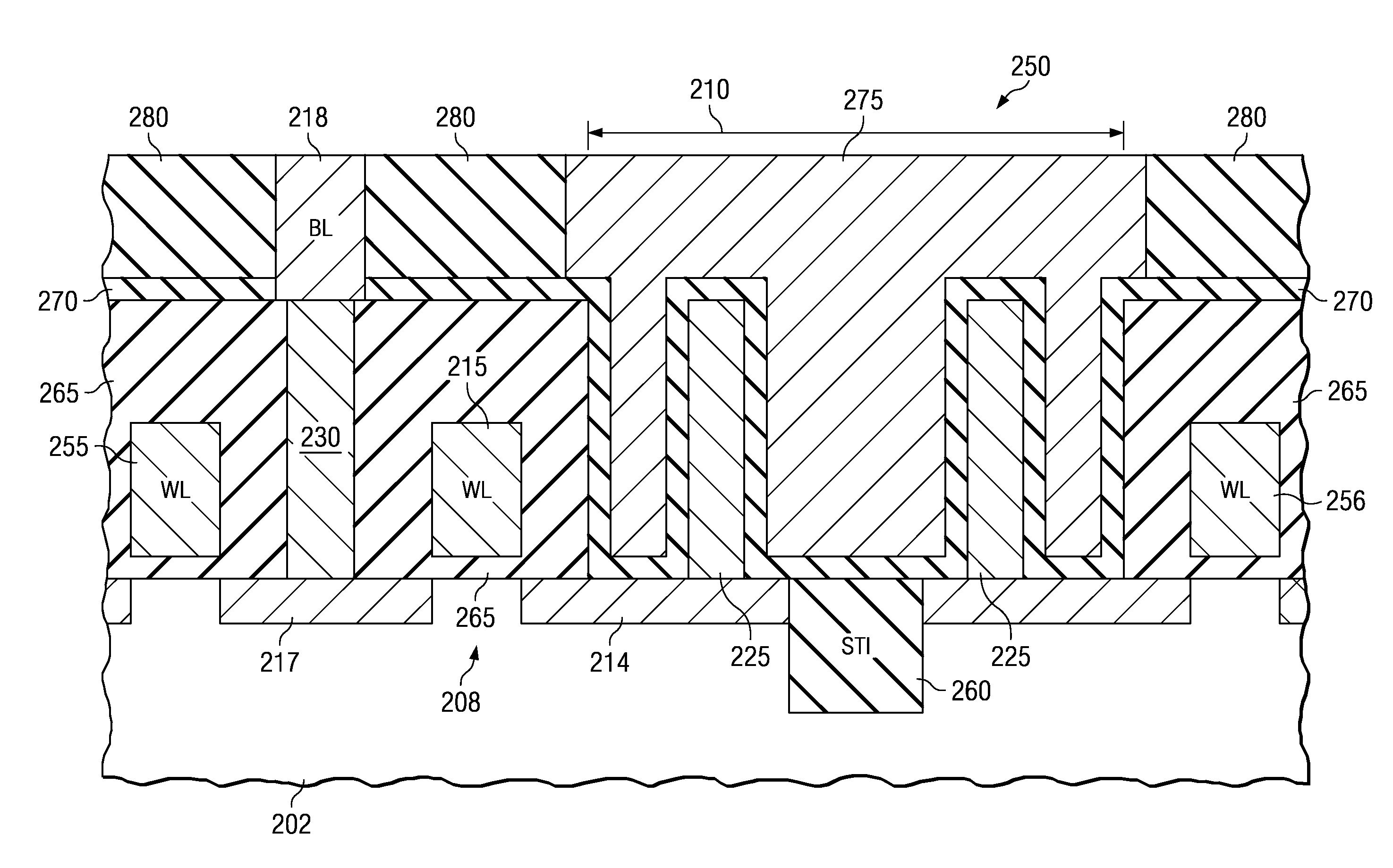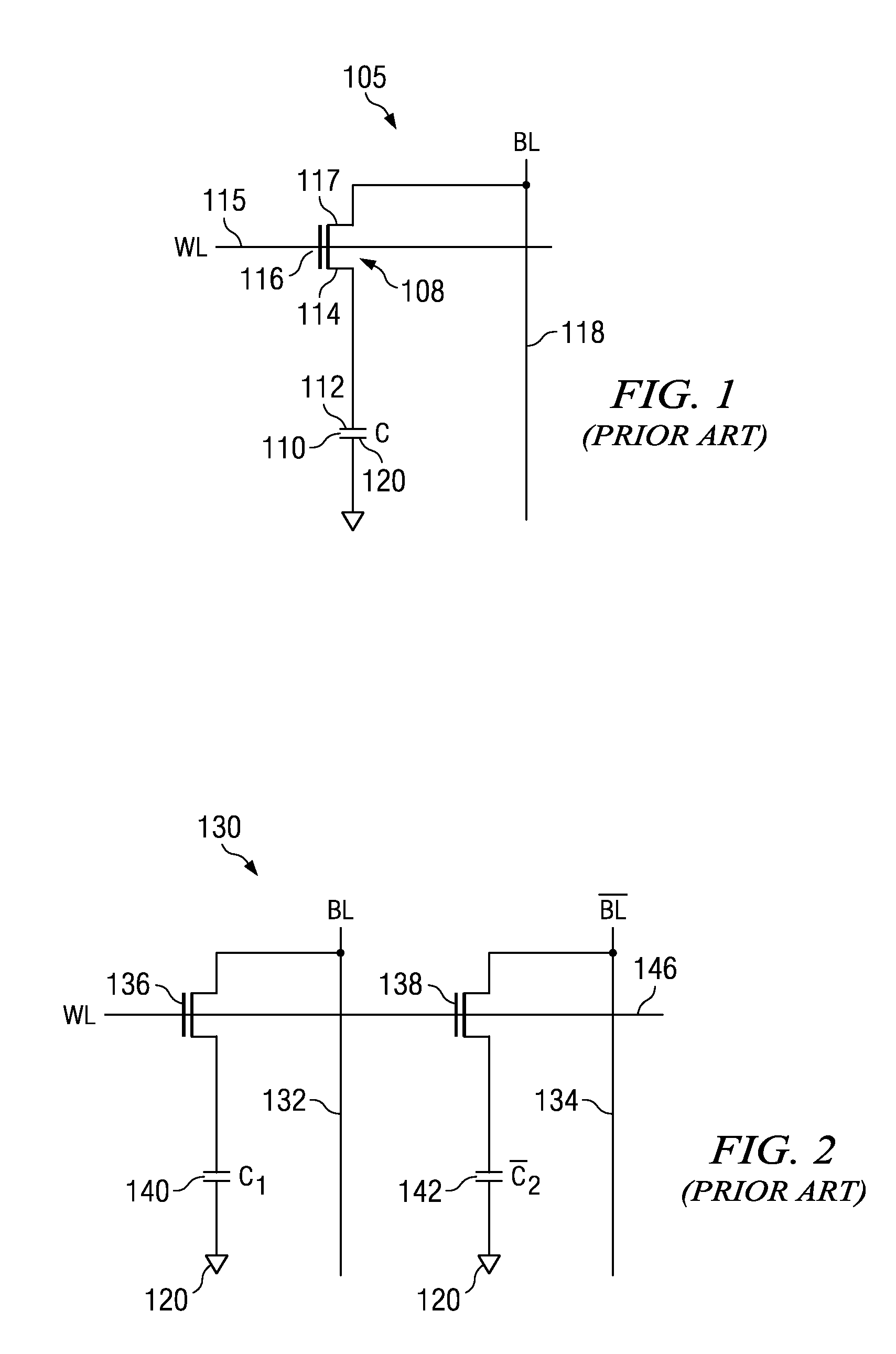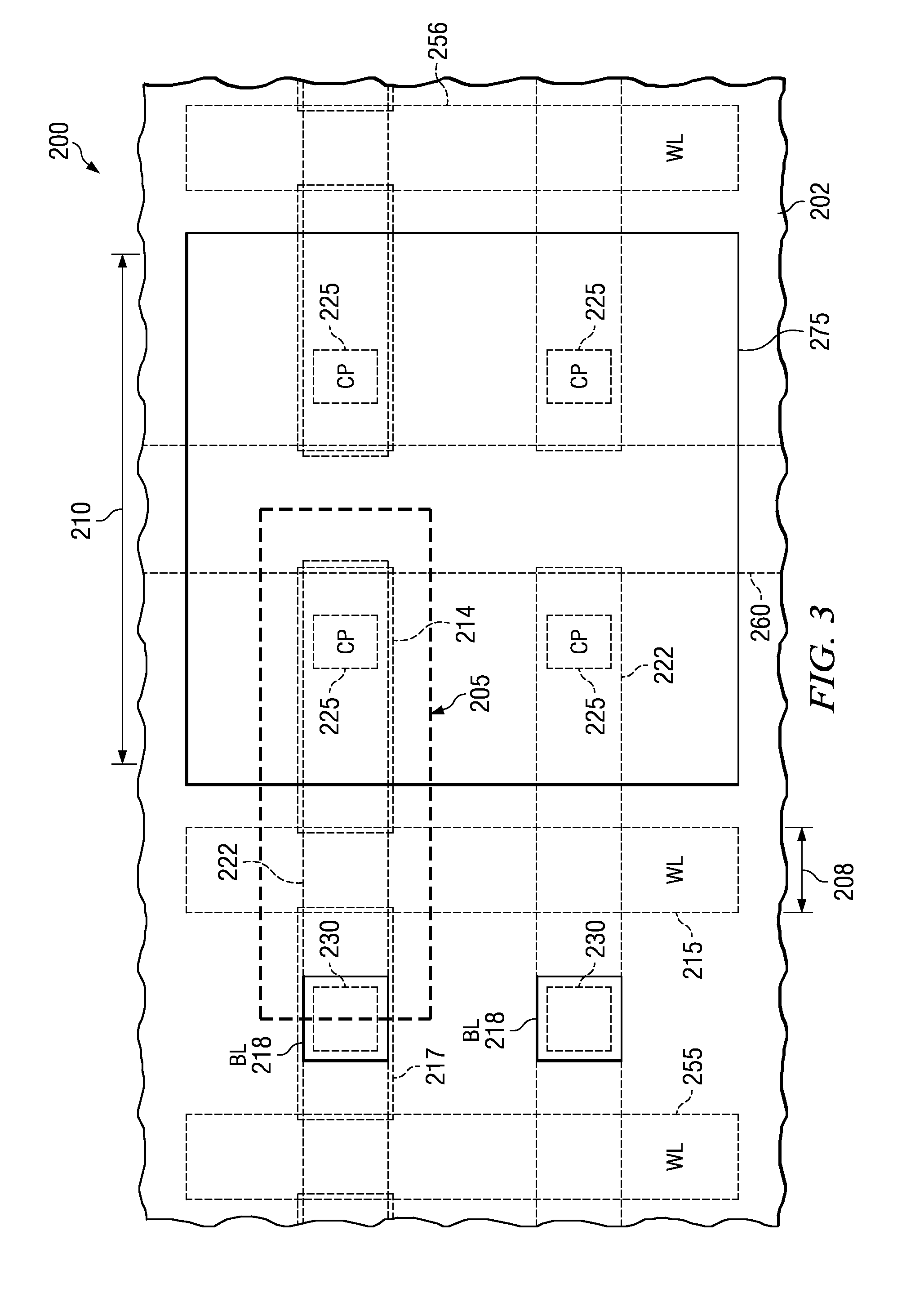Integrated dram process/structure using contact pillars
a contact pillar and process technology, applied in the field of semiconductor memory devices, can solve the problems of reducing the cross-sectional area of single-event upset, limiting process margins such as alignment tolerance, and personal devices requiring more computational power and on-chip memory, etc., to achieve the greatest capacitance density, improve the structural strength of the cell, and reduce the effect of single-event ups
- Summary
- Abstract
- Description
- Claims
- Application Information
AI Technical Summary
Benefits of technology
Problems solved by technology
Method used
Image
Examples
Embodiment Construction
[0051]The present invention will now be described with reference to the drawings, wherein like reference numerals are used to refer to like elements throughout. The invention is directed to an embedded DRAM (eDRAM) memory device utilizing a three dimensional capacitor under the bit line (CUB) memory cell array architecture, which is believed to be applicable to a variety of memory applications. In particular, the device structure provides a system and method of forming a high density DRAM memory cell using simple standard logic type processes. The memory cell of the present invention uses several variations of a contact pillar structure comprising a contact conductive material used as a first capacitor plate formed within a trench within a first insulating layer (e.g., a PMD layer). A capacitor dielectric layer comprising, for example, a capacitor dielectric material such as Ta2O5, TiO2, or BST then covers the contact pillar structures and the trench to insulate the first capacitor ...
PUM
 Login to View More
Login to View More Abstract
Description
Claims
Application Information
 Login to View More
Login to View More - R&D
- Intellectual Property
- Life Sciences
- Materials
- Tech Scout
- Unparalleled Data Quality
- Higher Quality Content
- 60% Fewer Hallucinations
Browse by: Latest US Patents, China's latest patents, Technical Efficacy Thesaurus, Application Domain, Technology Topic, Popular Technical Reports.
© 2025 PatSnap. All rights reserved.Legal|Privacy policy|Modern Slavery Act Transparency Statement|Sitemap|About US| Contact US: help@patsnap.com



